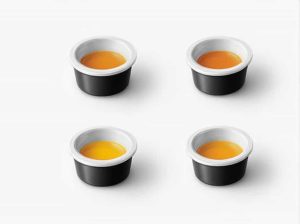Spaghetti sauce is a staple in many households, offering a rich and savory addition to pasta dishes. However, sometimes homemade or store-bought sauce can turn out too tart or acidic, making it less enjoyable. This tartness often comes from tomatoes, vinegar, or wine used in the sauce. Luckily, there are several ways to balance the flavors and create a smoother, more well-rounded taste.
In this guide, well explore different methods to reduce tartness in spaghetti sauce using common kitchen ingredients and cooking techniques.
Why Is Spaghetti Sauce Tart?
The main reason spaghetti sauce tastes too tart is the acidity of tomatoes. While some acidity is essential for a bright and fresh flavor, too much can make the sauce taste sour or overpowering. Several factors contribute to this tartness:
1. Type of Tomatoes Used
- Fresh tomatoes vary in acidity based on the variety and ripeness.
- Canned tomatoes, especially crushed or diced varieties, tend to be more acidic.
2. Tomato Paste or Concentrates
- These ingredients intensify the tomato flavor but also add extra acidity.
3. Wine or Vinegar Additions
- Some recipes use red or white wine, balsamic vinegar, or lemon juice, all of which increase acidity.
4. Long Cooking Times
- While simmering can develop flavors, overcooking tomatoes concentrates their acidity.
Understanding these factors helps in selecting the best method to neutralize tartness without compromising the sauces flavor.
Methods to Reduce Tartness in Spaghetti Sauce
1. Add a Sweetener
One of the simplest ways to balance acidity is by adding a small amount of sweetness. Sugar counteracts tartness and creates a smoother taste. Some sweeteners to try include:
- Granulated sugar The most common option: start with ½ teaspoon at a time.
- Brown sugar Adds a slight caramel note along with sweetness.
- Honey A natural sweetener that also enhances flavor depth.
- Carrots Finely grate a carrot into the sauce to naturally sweeten it.
- Baking soda Neutralizes acidity chemically (use ¼ teaspoon at a time).
Be cautious when adding sweeteners too much can make the sauce taste artificially sweet instead of balanced.
2. Use Dairy Products
Dairy can soften acidity and add a creamy texture to spaghetti sauce. Some effective options include:
- Butter Adds richness and helps mellow out acidic flavors.
- Heavy cream Creates a creamy tomato sauce while reducing tartness.
- Parmesan cheese The saltiness and umami in cheese counterbalance acidity.
- Milk A lighter option that still smooths out the sauce.
To use dairy, stir it in gradually toward the end of cooking. This prevents curdling and allows you to adjust the taste as needed.
3. Balance Flavors with Salt or Baking Soda
While salt doesnt reduce acidity, it enhances the overall flavor of the sauce and makes tartness less noticeable. Add a pinch at a time, tasting as you go.
Baking soda, on the other hand, is a natural alkaline that directly neutralizes acidity. Use sparingly (¼ teaspoon at a time) and mix well, as too much can create a soapy aftertaste.
4. Incorporate Fat for a Milder Taste
Fats help coat the tongue, making acidity less sharp. Try adding:
- Olive oil A classic addition for richness and depth.
- Butter Gives the sauce a silky, smooth texture.
- Ground meat If making a meat sauce, the fat from beef, pork, or sausage naturally balances acidity.
Fats should be added slowly and in moderation to prevent an overly greasy sauce.
5. Simmer for a Shorter Time
Cooking time impacts acidity. While long simmering enhances flavors, overcooking tomatoes intensifies tartness.
To avoid this:
- Simmer for 3060 minutes instead of hours.
- Use low heat to prevent caramelization of natural sugars, which can create a slightly bitter taste.
- If using fresh tomatoes, remove the seeds before cooking, as they contain a lot of acidity.
6. Add Vegetables to Soften the Flavor
Certain vegetables naturally absorb acidity and add subtle sweetness. Try mixing in:
- Grated carrots A classic Italian trick for balancing tomato sauce.
- Bell peppers Red, yellow, or orange peppers work best for mild sweetness.
- Onions Cooked onions provide a natural sweetness when caramelized.
Finely chopping or blending these vegetables into the sauce ensures they mix well without altering the texture too much.
7. Use a Different Type of Tomato
If you frequently experience tart sauce, consider changing the type of tomatoes you use:
- San Marzano tomatoes Naturally sweeter and less acidic than other varieties.
- Roma tomatoes A good option for mild flavor.
- Plum tomatoes Less tart compared to crushed or diced canned tomatoes.
If using canned tomatoes, look for low-acid or no-added-acid varieties.
How to Fix an Overly Sweet Sauce
If youve added too much sugar or sweeteners and the sauce tastes too sweet, you can fix it by:
- Adding a splash of vinegar (balsamic, red wine, or apple cider) to restore acidity.
- Mixing in more salt, garlic, or fresh herbs like oregano and basil to balance flavors.
- Using a little tomato paste to reintroduce some acidity.
Balancing sweetness and acidity is key to achieving a perfect spaghetti sauce.
Final Adjustments: Tasting and Tweaking
Once youve made adjustments, always taste the sauce before serving. Let the flavors blend for a few minutes, then check if the tartness is properly balanced. If needed, continue fine-tuning with a small amount of sweetener, salt, fat, or dairy until the taste is just right.
A tart or acidic spaghetti sauce can be easily fixed using simple ingredients and cooking techniques. Whether you prefer to sweeten it with sugar, balance it with dairy, or neutralize it with baking soda, the key is to adjust gradually and taste along the way.
By understanding what causes tartness and knowing how to counteract it, you can create a perfectly balanced spaghetti sauce every time.



